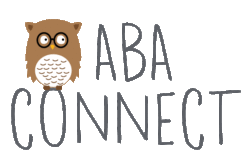Stimulus Control: Salience, Masking and Overshadowing
Stimulus Salience refers to how obvious or prominent a stimulus is in a person’s environment. If a person has visual deficits, then visual stimulus will not have as much salience as auditory stimulus, for example. In order to notice stimulus, and for that stimulus to have salience, a learner must possess pre-attending skills necessary for the setting. The pre-attending skills for kindergarten, for example, include looking at the instructional materials, listening to instructions and to the teacher and sitting quietly while instruction is happening.
Masking is when the salience of a stimulus is decreased. A competing stimulus blocks the evocative power of the stimulus, decreasing its effectiveness. For example, a teenager may follow directions when alone with a parent, have a more difficult time when peers are present. This example is competition of different contingencies of reinforcement which makes it more difficult for the subject to mind the discriminant stimulus.
Overshadowing is when the first stimulus has no more stimulus control. An example is a teenager who can study in a classroom, but not in front of the a group of cheerleaders.
In order to reduce the effect of overshadowing and masking, we must apply antecedent interventions such as: arranging the environment to reduce “noise” from unwanted stimulus, making the instructional stimuli intense and consistently reinforcing behavior in the presence of desired stimulus.




Hi! I’m having trouble differentiating between masking and overshadowing–they seem to describe the same loss of stimulus control. ?
Many Thanks,
Krista
Great question, Krista. Both masking and overshadowing describe interaction of the environment with stimulus control however, masking describes a situation of where there is stimulus control, but the subject is not able to exhibit the skill. Overshadowing describes a situation where a competing stimulus does not allow the subject to acquire the skill. A masking example would be a child who knows how to play piano in the living room of his house, but in a big concert full of people, chokes and cannot play the song. Overshadowing would be where the child is in a piano class but the environment is loud with other people playing other instruments and the child cannot learn the material because of the competing stimulus.
Excellent explanation, thank you!
Thank you! This really clarifies it!
So, due to a competing stimulus, stimulus salience is reduced
and
Masking: unable to exhibit/perform the behavior/skill..
Overshadowing: Unable to learn/acquire the behavior/skill..
Do I have this correct? Feel free to correct or clarify.
What is the term for when you notice a stimulus less because you encounter it frequently? (ie there has been a sticky note on my mirror for 6 months; it no longer serves as a reminder to do what I wrote on it. I am so used to seeing it that I do not pay attention to it anymore)
Habituation
Thanks for sharing! aactually you are right about Antecedent stimulus representative of a group of stimuli sharing a common relationship (examples) are presented, along with…